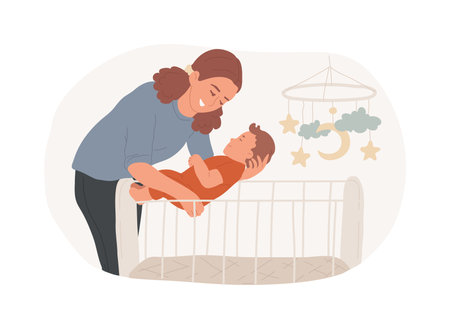1. Understanding Expressive and Receptive Language Development
Language development in babies happens in two key ways: expressive language and receptive language. Both are essential for a babys ability to communicate and interact with the world around them.
What Are Expressive and Receptive Language Skills?
Expressive language refers to a babys ability to express their thoughts, needs, and feelings through sounds, gestures, and eventually words. Receptive language, on the other hand, is the ability to understand what others are saying. While these skills develop together, receptive language usually comes first—babies typically understand words before they can say them.
Key Differences Between Expressive and Receptive Language
| Expressive Language | Receptive Language |
|---|---|
| Involves producing sounds, words, and gestures | Involves understanding words and meanings |
| Includes babbling, pointing, waving, and eventually speaking | Includes recognizing familiar voices, responding to names, and following simple instructions |
| Takes more time to develop as it requires motor control | Develops earlier as babies listen and absorb language from birth |
Why Are Both Skills Important?
A balance of expressive and receptive language skills helps babies communicate effectively. Strong receptive skills allow babies to understand instructions and engage in conversations later on. Meanwhile, developing expressive skills helps them share their needs and emotions with caregivers. Encouraging both areas of language growth early on sets the foundation for strong communication skills in childhood.
2. Creating a Language-Rich Environment at Home
Helping your baby develop strong language skills starts with creating an environment filled with words, sounds, and engaging interactions. Babies learn best through daily conversations, storytelling, and exposure to a variety of words. By making language a natural part of everyday life, you can help your little one build both expressive (speaking) and receptive (understanding) language skills.
Engage in Everyday Conversations
Talking to your baby throughout the day helps them absorb new words and understand how language works. Even if they cant respond yet, they are listening and learning from you.
Ways to Incorporate Conversation:
| Activity | How to Use Language |
|---|---|
| Diaper Changes | Describe what youre doing: “Lets put on a fresh diaper! This one feels so soft.” |
| Mealtime | Name foods and describe textures: “This banana is sweet and soft.” |
| Bath Time | Talk about sensations: “The water is warm. Let’s splash!” |
| Walks Outside | Point out objects: “Look at the big blue sky! Do you hear the birds?” |
The Power of Storytelling
Reading books and telling stories introduce your baby to new vocabulary, sentence structures, and the rhythm of language. Even newborns benefit from hearing stories read aloud in an expressive voice.
Tips for Making Storytime Engaging:
- Use Different Voices: Make characters come alive with varied tones and expressions.
- Point to Pictures: Label objects and animals in books to connect words with visuals.
- Encourage Interaction: Ask simple questions like “Wheres the dog?” to keep your baby engaged.
- Repeat Favorite Books: Repetition helps reinforce words and phrases.
Create Opportunities for Two-Way Communication
Your baby may not be talking yet, but they communicate through coos, babbling, gestures, and facial expressions. Responding to these early attempts at communication encourages them to continue exploring language.
How to Encourage Back-and-Forth Communication:
- Mimic Sounds: If your baby says “ba-ba,” repeat it back with enthusiasm.
- Acknowledge Gestures: If they point at something, name it: “Oh, you see the cat!”
- Add Words to Their Sounds: If they say “da,” expand on it: “Yes! That’s Daddy!”
- Praise Attempts: Encourage any effort they make to communicate by smiling and responding warmly.
A home rich in language sets the foundation for strong communication skills. Through everyday interactions, storytelling, and back-and-forth exchanges, you are helping your baby develop essential expressive and receptive language abilities.

3. Using Gestures, Facial Expressions, and Sounds
Babies start learning language long before they say their first words. One of the most important ways they communicate early on is through nonverbal cues like gestures, facial expressions, and sounds. These forms of communication help babies understand meaning and develop both expressive and receptive language skills.
How Gestures Help with Language Development
Gestures are a powerful way for babies to express themselves before they can speak. Simple actions like waving, pointing, or reaching help them communicate needs and desires. Parents can encourage this by using gestures consistently while speaking.
| Gesture | Meaning | How to Encourage It |
|---|---|---|
| Waving | “Hello” or “Goodbye” | Wave when greeting or saying goodbye to reinforce the meaning. |
| Pointing | “I want that” or “Look at that” | Name the object your baby points at to build word association. |
| Reaching | “Pick me up” or “Give me that” | Acknowledge the request with words like “Do you want up?” |
The Role of Facial Expressions in Communication
Your face is one of the first things your baby learns to read. Smiling, frowning, or raising your eyebrows helps your baby understand emotions and reactions. Babies also mimic facial expressions, which strengthens their ability to express feelings.
Ways to Use Facial Expressions with Your Baby:
- Mimic their expressions: If your baby smiles, smile back! This reinforces social interaction.
- Exaggerate emotions: Show excitement when introducing new words or objects.
- Name emotions: Say “You look happy!” or “That made you surprised!” to connect feelings with words.
The Importance of Sounds and Tone of Voice
The way you use your voice matters just as much as the words you say. Babies respond to tone, pitch, and rhythm even before understanding actual words.
Tips for Using Sounds Effectively:
- Singing: Simple songs and nursery rhymes help babies recognize patterns in language.
- Babble Back: When your baby coos or babbles, respond as if having a conversation.
- Dramatic Voice Changes: Use a playful tone when asking questions or showing excitement.
The more you engage your baby using gestures, facial expressions, and sounds, the more they will learn about communication. These early interactions lay the foundation for strong language skills in the future.
4. Encouraging Babbling and Early Speech
Babbling is an essential step in your babys language development. Those adorable coos and repetitive sounds are more than just cute noises—theyre the building blocks of future speech! By responding to your baby’s vocalizations, you help them feel heard and encourage more complex communication.
Why Babbling Matters
Babbling is how babies experiment with sounds, practice mouth movements, and start understanding the rhythm of conversation. It also strengthens their confidence in expressing themselves. When you engage with your baby’s babbles, youre showing them that communication is a two-way process.
How to Encourage Babbling
| Strategy | How It Helps |
|---|---|
| Talk Back | When your baby babbles, respond as if youre having a real conversation. This reinforces turn-taking skills. |
| Imitate Sounds | Mimicking your babys sounds encourages them to keep experimenting with new ones. |
| Add New Words | If they say “ba-ba,” expand on it by saying, “Yes! Bottle!” This helps connect sounds with meanings. |
| Use Exaggerated Expressions | Your facial expressions and tone make communication exciting and engaging for your baby. |
| Singing and Rhymes | Songs and nursery rhymes introduce patterns in speech that babies love to mimic. |
The Role of Repetition
Repetition is key in early language development. Babies need to hear words multiple times before they begin using them. Repeat their favorite sounds and words often to reinforce their learning.
Recognizing Early Words
Your baby’s first words may not sound perfect, but celebrating their efforts is important! If they say “da” for “daddy,” acknowledge it enthusiastically: “Yes! Daddy!” This positive reinforcement encourages them to keep trying new words.
Create a Language-Rich Environment
- Narrate daily activities: Describe what youre doing while changing diapers or preparing meals.
- Name objects around the house: Point to toys, furniture, and people while saying their names.
- Encourage gestures: Waving, clapping, and pointing help bridge the gap between babbling and meaningful speech.
The more you interact with your baby through conversation, songs, and playful exchanges, the more confident they will become in using their voice. Keep responding enthusiastically to every coo and babble—it all plays a role in shaping their future language skills!
5. Reading, Singing, and Play-Based Learning
Discover the powerful impact of reading, singing, and interactive play on expanding your babys vocabulary and comprehension skills. Engaging with your baby through these activities not only strengthens your bond but also lays a strong foundation for language development.
Reading: A Gateway to Language
Reading to your baby helps them become familiar with different sounds, tones, and words. Even if they dont understand every word, they are absorbing language patterns and rhythms.
Tips for Effective Reading Time
- Use expressive voices: Change your tone and pitch to make stories more engaging.
- Choose interactive books: Books with textures, flaps, or bright pictures keep babies interested.
- Repeat favorite stories: Repetition helps reinforce language patterns and new words.
- Point to pictures: Naming objects in books enhances word recognition.
Singing: The Rhythm of Language
Songs introduce babies to new vocabulary while reinforcing sentence structures through repetition and melody. Singing also makes language learning fun and engaging.
Benefits of Singing to Your Baby
| Benefit | Description |
|---|---|
| Improves Listening Skills | Songs help babies recognize patterns in speech. |
| Enhances Memory | The repetitive nature of songs strengthens recall abilities. |
| Encourages Expression | Singing along or babbling in response supports verbal development. |
| Makes Learning Fun | The musical aspect keeps babies engaged and entertained. |
Play-Based Learning: Talking Through Play
Play is a natural way for babies to explore language. When parents engage in interactive play, they provide real-life context for words and phrases.
Ways to Encourage Language Through Play
- Pretend Play: Use dolls, stuffed animals, or toy kitchens to model conversations.
- Name Objects: Describe toys and actions as you play together (e.g., “You’re rolling the ball!”).
- Sensory Play: Activities like playing with water or sand introduce descriptive words (e.g., “wet,” “soft,” “cold”).
- Songs with Actions: Songs like “Itsy Bitsy Spider” pair movement with words for better understanding.
The combination of reading, singing, and interactive play creates a rich language environment that nurtures both expressive and receptive skills. By incorporating these activities into daily routines, parents can help their little ones develop strong communication skills from an early age.


